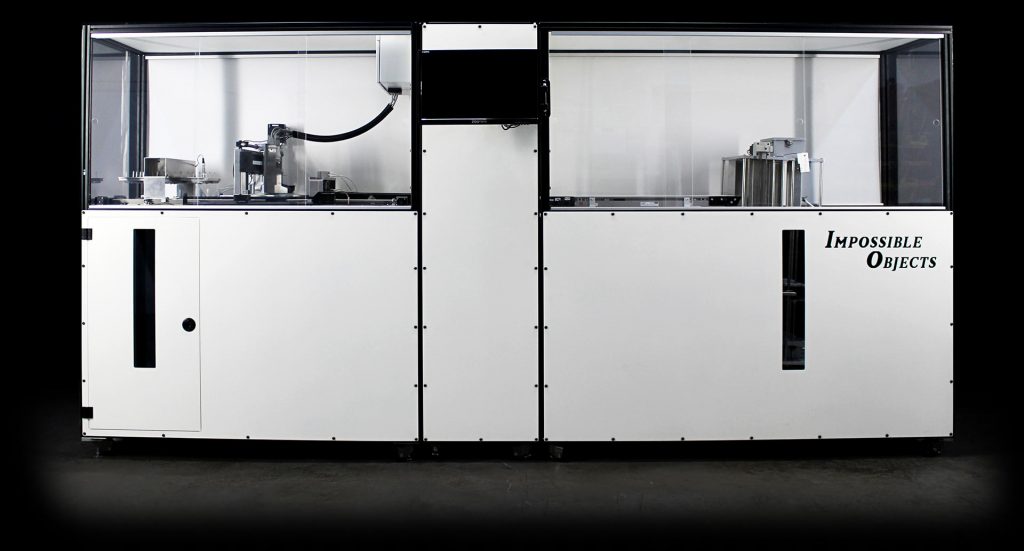Impossible Objects Piloting Composite-Based 3D Printer to Select Customers
Latest News
May 11, 2017
Impossible Objects launched Model One, its pilot 3D printing machine to initial pilot program members, including select Fortune 500 customers, during the RAPID+TCT 3D printing and additive manufacturing conference.
 Impossible Objects has introduced its composite-based additive manufacturing technology (CBAM) to select Fortune 500 companies to pilot. Image courtesy of Impossible Objects.
Impossible Objects has introduced its composite-based additive manufacturing technology (CBAM) to select Fortune 500 companies to pilot. Image courtesy of Impossible Objects.The Model One is designed to 3D print functional parts, at scale, using a wide selection of materials. Impossible Objects’ composite-based additive manufacturing method (CBAM) enables companies to use a range of composite materials, including carbon fiber, Kevlar and fiberglass together with PEEK and other high performance polymers, to build strong, lightweight parts. Conventional thermal inkjet heads are used to “print” designs on sheets of composites, like carbon fiber, Kevlar or fiberglass. Each sheet is then flooded with a polymer powder, such as nylon or PEEK, causing the powder to stick where inkjet fluid has been deposited on the sheets. Excess powder is vacuumed off and the sheets are stacked, compressed and heated. The polymer powder melts and bonds the sheets together. The uncoated fibers are then mechanically or chemically removed. The company says what remains is an exceptionally durable, lightweight object that was previously impossible to make so quickly and inexpensively.
“Based on its combination of speed, strength and material sets, we believe Impossible Objects’ CBAM could become an enabling technology for high-volume manufacturing,” said Greg Ojeda, senior director of AM Ecosystem Development and Strategy at Jabil. “We’ve identified applications where Impossible Objects could deliver a competitive advantage and significant cost savings over conventional manufacturing processes. We are excited to take part in Impossible Objects’ pilot program and look forward to working with the Impossible Objects’ team.”
The Model One will become available to the public by early 2018.
For more info, visit Impossible Objects.
Sources: Press materials received from the company.
Subscribe to our FREE magazine, FREE email newsletters or both!
Latest News






